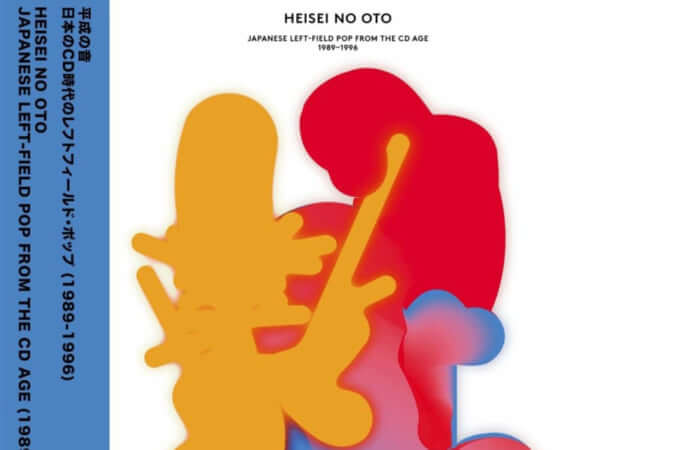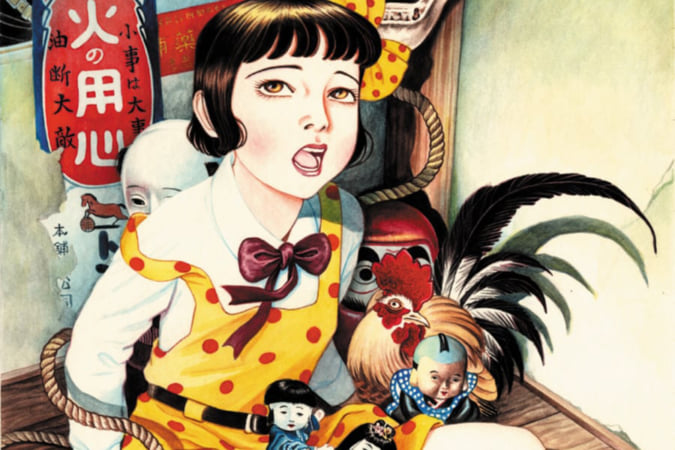Twenty Thousand Leagues Under the Ground Near Tokyo
Just outside the Japanese capital, it is now possible for visitors to wander through an enormous underground anti-flood tunnel.
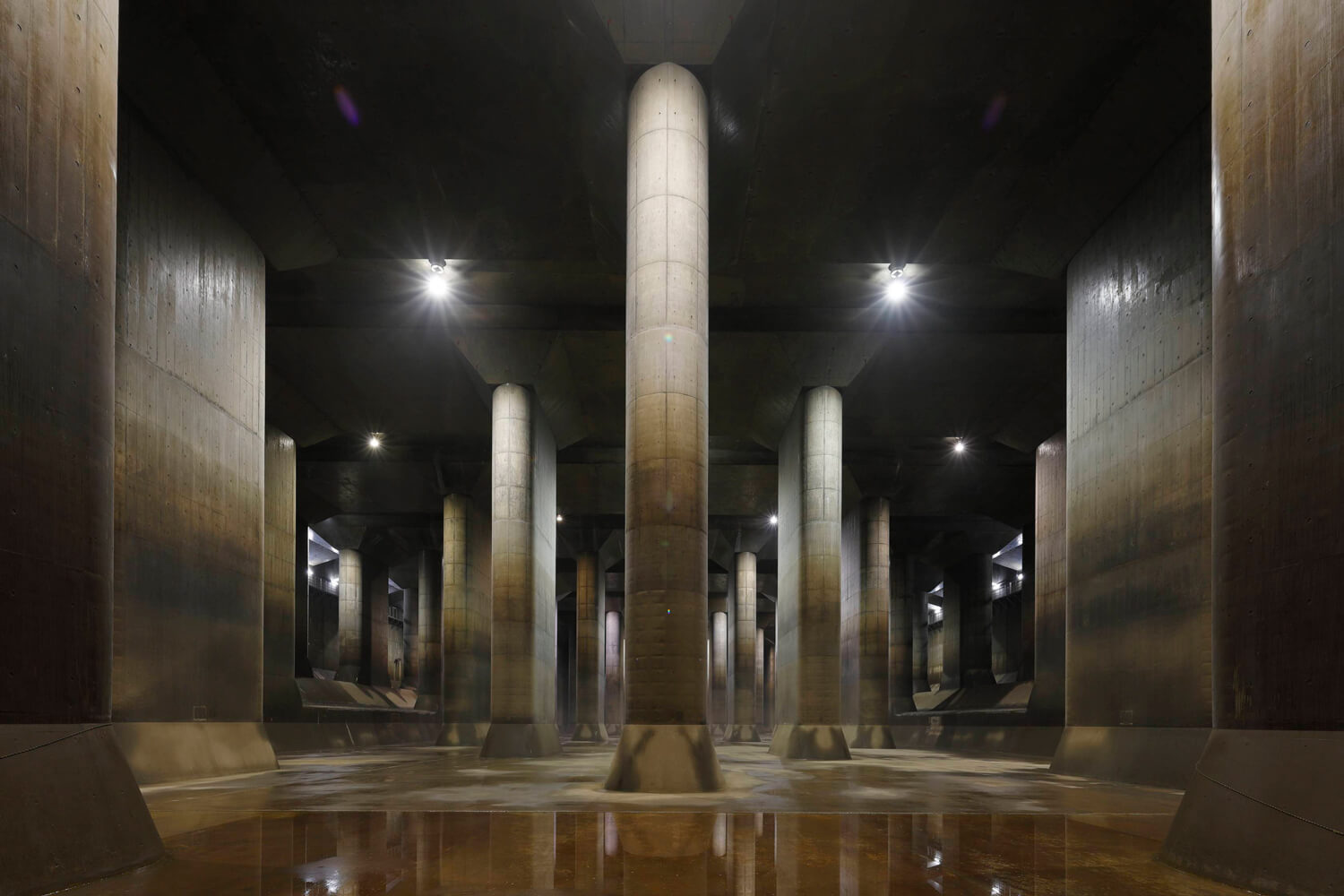
Courtesy of Edogawa River Office
Around 30 kilometres north of Tokyo, in Saitama Prefecture, floods were a frequent problem and caused a considerable amount of damage. To resolve this, the building of a monumental structure began in 1993. Named the Metropolitan Area Outer Underground Discharge Channel, this underground structure was designed to remove excess water from small and medium-sized rivers during periods of flooding. The water then runs into a central tunnel, a bank, and then a pressure-adjusting underground space, before finally flowing out into Tokyo Bay.
A forest of concrete pillars
The anti-flood tunnel, completed in 2006, is open to visitors. The exhibition is free if booked in advance, and a guided tour (in Japanese but some explanatory materials are in English) is also available for those wishing to find out more about the strategies implemented by Japan to tackle natural disasters.
In this impressively large space, the visitor will discover, in the 18m-high main reservoir, a forest of 59 reinforced concrete pillars supporting the ceiling, each weighing at least 500 tonnes. This room is nicknamed ‘The Temple’ and has appeared in films and television programmes.
More information on the Metropolitan Area Outer Underground Discharge Channel can be found on Saitama Prefecture’s website.
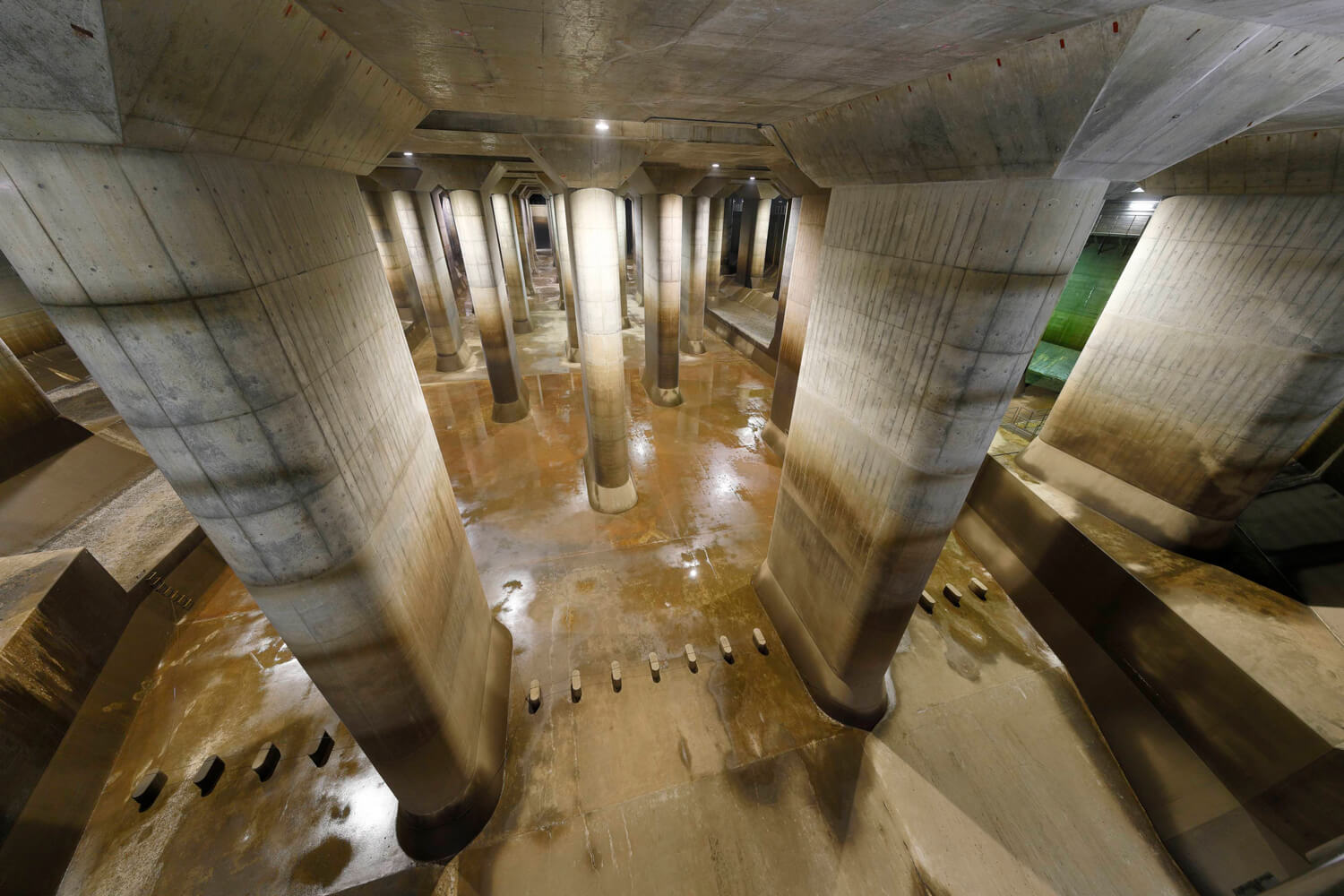
Courtesy of Edogawa River Office
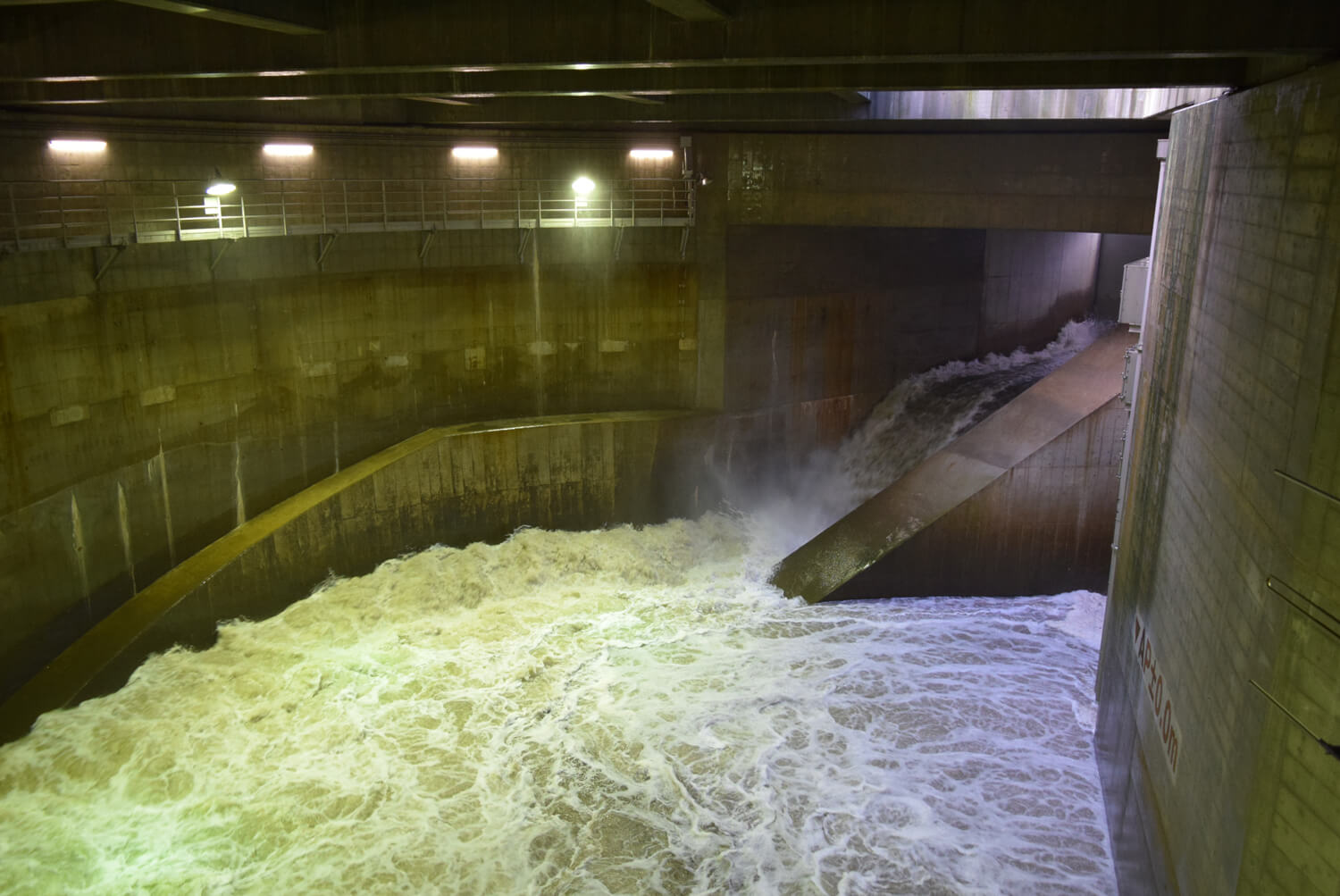
Courtesy of Edogawa River Office
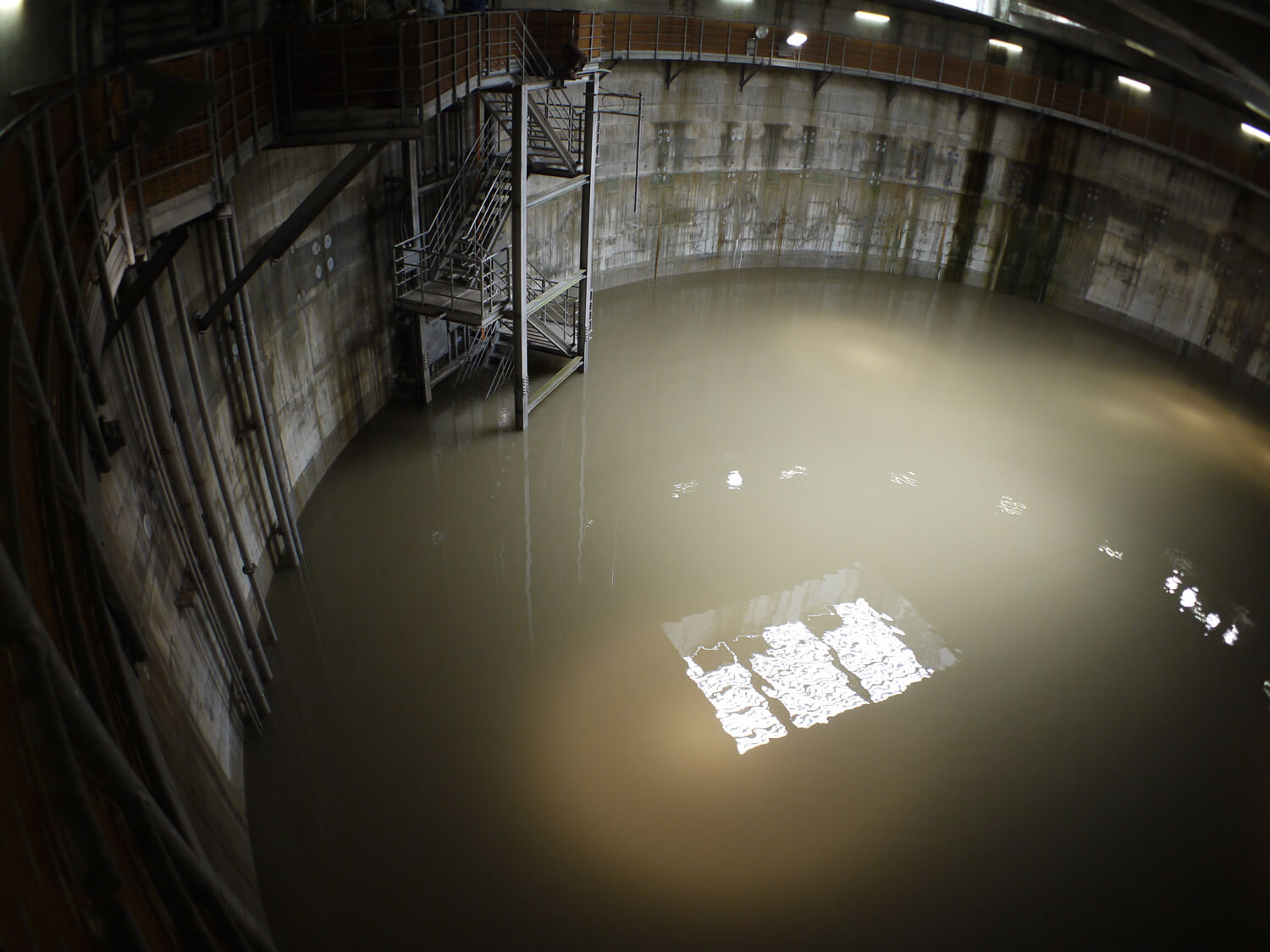
Courtesy of Edogawa River Office
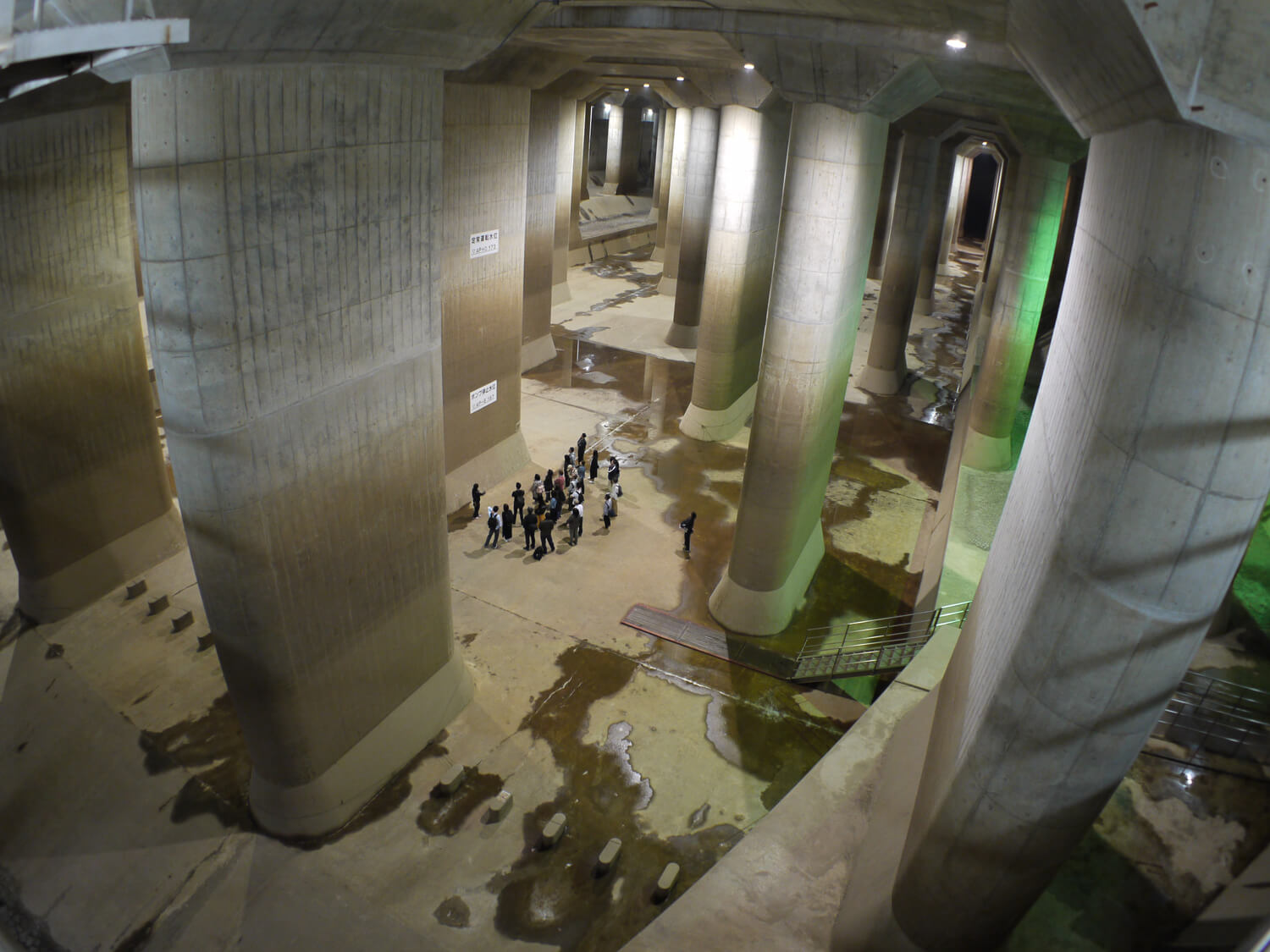
Courtesy of Edogawa River Office
TRENDING
-
The Tattoos that Marked the Criminals of the Edo Period
Traditional tattoos were strong signifiers; murderers had head tattoos, while theft might result in an arm tattoo.

-
The Story of Sada Yacco, the Geisha who Bewitched Europe
Described by Dazed magazine as the first beauty influencer, she has been restored to her former glory since 2019.

-
Chiharu Shiota, Red Threads of the Soul
Last year, more than 660,000 people visited the retrospective 'Chiharu Shiota: The Soul Trembles' exhibit at the Mori Art Museum.

-
Japanese Left-field Pop From The CD Age, 1989-1996
‘Heisei No Oto’, a compilation of hidden gems in the unspoken depths of Japanese pop, reveal blissful moment of technological possibility.

-
‘Shojo Tsubaki’, A Freakshow
Underground manga artist Suehiro Maruo’s infamous masterpiece canonised a historical fascination towards the erotic-grotesque genre.




